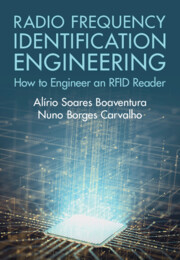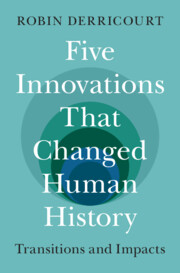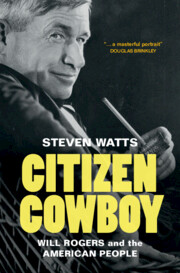Refine search
Actions for selected content:
97 results
Chapter 2 - Quarry
-
- Book:
- American Performance in 1976
- Published online:
- 27 November 2025
- Print publication:
- 11 December 2025, pp 104-155
-
- Chapter
- Export citation
“LM for Happy Listening”: The Political Entanglements of Lourenço Marques Radio on the Fringe of Modernity in Mozambique
-
- Journal:
- Traditions of Music and Dance ,
- Published online by Cambridge University Press:
- 05 December 2025, pp. 1-33
-
- Article
-
- You have access
- Open access
- HTML
- Export citation
Maternal exposure to a radio programme and maternal and child nutrition-related practices: cross-sectional analyses of the 2022 Nepal Demographic and Health Survey
-
- Journal:
- Journal of Nutritional Science / Volume 14 / 2025
- Published online by Cambridge University Press:
- 30 October 2025, e77
-
- Article
-
- You have access
- Open access
- HTML
- Export citation
Chapter 33 - Technology
- from Part VIII - Ideas, Beliefs and Interventions
-
-
- Book:
- Schoenberg in Context
- Published online:
- 04 September 2025
- Print publication:
- 04 September 2025, pp 325-331
-
- Chapter
- Export citation
Chapter 4 - Recorded Stand-Up from Radio to Netflix
- from Part I - Time and Place
-
-
- Book:
- The Cambridge Companion to Stand-Up Comedy
- Published online:
- 21 August 2025
- Print publication:
- 04 September 2025, pp 83-96
-
- Chapter
- Export citation
Wireless nation: Infrastructural politics of Tibetan and Mongolian Morse codes in China
-
- Journal:
- Modern Asian Studies / Volume 59 / Issue 2 / March 2025
- Published online by Cambridge University Press:
- 29 August 2025, pp. 536-559
- Print publication:
- March 2025
-
- Article
-
- You have access
- Open access
- HTML
- Export citation

Radio Frequency Identification Engineering
- How to Engineer an RFID Reader
-
- Published online:
- 02 January 2025
- Print publication:
- 09 January 2025
2.8 - The Voice
- from History 2 - Mechanisms
-
-
- Book:
- The New Cambridge History of Russian Literature
- Published online:
- 31 December 2024
- Print publication:
- 12 December 2024, pp 353-368
-
- Chapter
- Export citation
Chapter 20 - Fatwās on Aspects of Modern Life
- from Part III - Legal Opinions (Fatwās)
-
-
- Book:
- Islamic Law in Context
- Published online:
- 14 November 2024
- Print publication:
- 21 November 2024, pp 214-222
-
- Chapter
- Export citation
Chapter 6 - Communicating Wirelessly
-
- Book:
- Five Innovations That Changed Human History
- Published online:
- 01 November 2024
- Print publication:
- 21 November 2024, pp 187-234
-
- Chapter
- Export citation
7 - An Early Australian Musical Modernism
- from Part II - Encounters
-
-
- Book:
- The Cambridge Companion to Music in Australia
- Published online:
- 14 November 2024
- Print publication:
- 14 November 2024, pp 111-129
-
- Chapter
- Export citation
23 - Youth Broadcasting and Music Festivals in Australia
- from Part IV - Institutions
-
-
- Book:
- The Cambridge Companion to Music in Australia
- Published online:
- 14 November 2024
- Print publication:
- 14 November 2024, pp 362-377
-
- Chapter
- Export citation

Five Innovations That Changed Human History
- Transitions and Impacts
-
- Published online:
- 01 November 2024
- Print publication:
- 21 November 2024
Recovering Palestinian Lives: Qudsiyya Khurshid from Mandate Palestine to Postwar Pennsylvania
-
- Journal:
- International Journal of Middle East Studies / Volume 56 / Issue 4 / November 2024
- Published online by Cambridge University Press:
- 13 March 2025, pp. 627-644
- Print publication:
- November 2024
-
- Article
-
- You have access
- Open access
- HTML
- Export citation
6 - An Age of Publicity
-
- Book:
- Citizen Cowboy
- Published online:
- 16 August 2024
- Print publication:
- 29 August 2024, pp 127-150
-
- Chapter
- Export citation
12 - Man in Motion
-
- Book:
- Citizen Cowboy
- Published online:
- 16 August 2024
- Print publication:
- 29 August 2024, pp 317-346
-
- Chapter
- Export citation

Citizen Cowboy
- Will Rogers and the American People
-
- Published online:
- 16 August 2024
- Print publication:
- 29 August 2024
9 - Forgiving Not Fighting
- from Part III - Give Peace a Chance!
-
- Book:
- The Peace Formula
- Published online:
- 31 August 2024
- Print publication:
- 15 August 2024, pp 132-150
-
- Chapter
- Export citation
42 - Performance and the Irish Essay
- from Part V - The Essay and the Essayistic Today
-
-
- Book:
- The Cambridge History of the British Essay
- Published online:
- 31 October 2024
- Print publication:
- 04 July 2024, pp 635-649
-
- Chapter
- Export citation
Chapter 28 - Working with the BBC
- from Part V - Institutions
-
-
- Book:
- Vaughan Williams in Context
- Published online:
- 28 March 2024
- Print publication:
- 04 April 2024, pp 239-248
-
- Chapter
- Export citation
